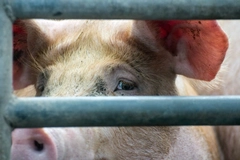
- Industry news
Industry news
- Category news
Category news
- Reports
- Key trends
- Multimedia
- Journal
- Events
- Suppliers
- Home
- Industry news
Industry news
- Category news
Category news
- Reports
- Key trends
- Multimedia
- Events
- Suppliers
New Food Safety Control System Presented at the IDF World Dairy Summit

1 Nov 2013 --- Experts in food safety are gathered this week at the IDF World Dairy Summit in Yokohama, Japan, to discuss the latest advances in this field. The new “moving window approach” in microbiological testing will be presented tomorrow as a practical and cost-effective solution that enables dairy producers to verify the performance and acceptability of the entire food safety system.
This new approach implies a change of focus from testing acceptability of individual batches of products to testing the acceptability of the performance of the process control system.

Commenting on this new application of microbiological criteria, Dr Jeremy Hill, IDF President, says: “Our sector today is a major source of essential nutrition and we are committed to develop innovative solutions to play an even bigger role in future sustainable, nutritious, safe and affordable diet. IDF was successful in introducing this new concept and trend analysis for the verification of HACCP (Hazard Analysis & Critical Control) systems. We have enormous combined knowledge and expertise, and by working with our partners and collaborators we can enhance and focus this expertise on priority issues such as food safety.”
“The new concept provides a more practical and cost effective solution for food safety control. I encourage dairy processors to look into the application of this approach within the dairy plants.”
The new method has been developed under the umbrella of the IDF Standing Committee on Microbiological Hygiene, in close collaboration with the Codex Alimentarius, the Food and Agriculture Organization of the United Nations (FAO) and the World Health Organization (WHO).
Claus Heggum led the Action Team that developed this method for introduction in the just published Codex Guidelines on microbiological criteria. “The development process involved international food experts and close liaison with Codex experts to ensure that this new approach meets Codex requirements. The concept went through all steps of the Codex procedure and after three years IDF achieved recognition of the method at Codex level. This recognition is key and will help us to introduce this approach at national levels..”
This method has already been implemented in Denmark and has proved to be a cost beneficial way to demonstrate acceptable performance of HACCP systems. The Chair of the Codex Working Group on microbiological criteria, Dr Toyofuku, welcomes the introduction of this new way of applying microbiological criteria. Dr Toyofuku, who will also be chairing the session of the Conference on Food Safety at the IDF World Dairy Summit on 1 November, said: “This is a major achievement which will enable food business operators to monitor the performance of both process control and food safety control systems.. This approach has just been introduced into the Japanese market and I am convinced that its implementation will present opportunities to our industry.”
In addition to the Codex Guidelines, a peer-reviewed explanatory article on the application of the approach has been produced. “Moving windows can be applied as routine verification of the performance of HACCP systems. However, if any problems are suspected, samples may then have to be tested by the more traditional lot by lot method. In a food business, both approaches should work hand-in-hand, they are really complementary,” added Claus Heggum.
The peer-reviewed article will be published in Food Control in the coming months.










